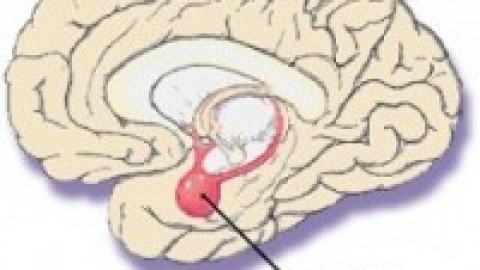 Have you heard of the expressions like- oh he has the brain in the knee, knee jerk reaction or working from the brain stem, amygdala hijack and so on? By that, one may be referring to the times when actions play out like ‘automatic reflexes’ where thinking is absent or minimal.
Have you heard of the expressions like- oh he has the brain in the knee, knee jerk reaction or working from the brain stem, amygdala hijack and so on? By that, one may be referring to the times when actions play out like ‘automatic reflexes’ where thinking is absent or minimal.
Signals from the visual stimuli (things that you see with the eye) first travel to the area of the brain where eye is represented. Surprise, surprise, it is not at the front of the brain where eyes are present in the face. The eye area is all the way at the back portion of the brain called the occipital cortex. When you see anything at all, its shape and color is decoded in the back part of the brain called the occipital cortex. The messages then immediately travel to the amygdala that we have been talking about. Amygdala perceives the emotions linked to the visual stimuli. If we see an angry face for 40 milliseconds or less, amygdala receives the signals of emotion and shows increased activity with such negative stimuli.
But listen, Morris and colleagues, and also La Deaux and colleagues have shown in monkeys followed by other human studies in our field, that if the stimulus is seen ONLY for a few milliseconds such as less than 40 msec, the stimulus does not even reach the prefrontal cortex. It just reaches as far as the amygdala and its connections to motor cortex. In other words, there is no opportunity to even think and reflect before they feel and act out.
This makes me think that people are exposed to so many micro-stresses and micro-attacks of negative stimuli all the time. They may be causing restlessness without even knowing what is actually bothering them. Poor recruitment of higher cortex may be responsible for why kids often cannot recount or access what all has happened after they explode due to the overwhelming nature of the emotional turmoil.
The most important translational point from this research scenario is to extend our thinking to focus on the stimulus so far as to only understand without pushing it under the rug, where possible, and define what is triggering negative feelings. For example, with the grumpy face of the teacher or a boss or a peer, one can think that s/he may be having a bad day, or that you can focus on your work as your job is to not pay attention to other’s issues. Engage the thinking part of the brain than just feeling distressed. I call this “putting the finger on what is bothering you” and making a deliberate choice to step out of it and rescuing yourself. And stop personalizing.
Another scenario, and akin to kindling (much like seizures) is the theory where amygdala is prone to reactivity with little room for reflection or modulation even if the prefrontal cortex attempts to calm the amygdala. At times, the prefrontal cortex cannot make assertive decisions by suppressing the highly reactive amygdala. While inherently all of us are different, and some of us react more and some much less, there is a way to safe guard people from excessive habitual reactivity. I think taming children not to explode or fall into the habit of screaming makes sense to me. The default of reactivity at the amygdala level without modulation and reflection can be a learnt behavior. It can become unmanageable without intervention.
So what transpires to me is to safeguard children from falling into the habit of reactivity through active teaching of logical thinking. Rogerian methods of supportive problem solving and self psychology model of mirroring goodness in children and validating their efforts are all helpful tools to influence them to conduct themselves thoughtfully and mindfully. We are beginning to teach children “poise,” hence the name of the project, “Poise.”
A great deal of gun violence and emotional or physical abuse can be explained by the potential brain mechanisms of quick reactivity. Imagine impulse control problems and emotion control problems operated by ventrolateral prefrontal cortex (VLPFC) are layered on top of the scenarios described here. While reactivity to negative stimuli can be complex, understanding one part at a time is illuminating.














